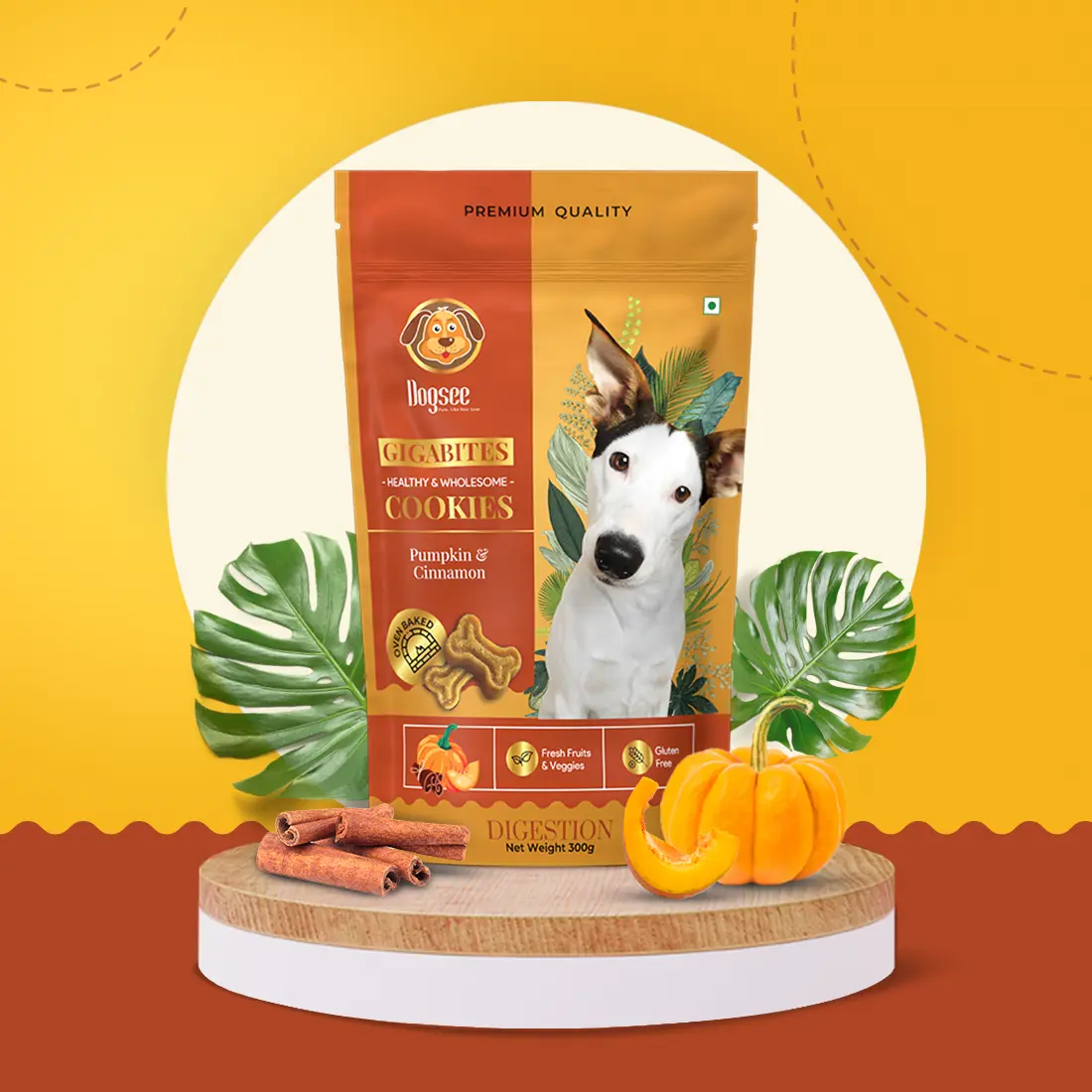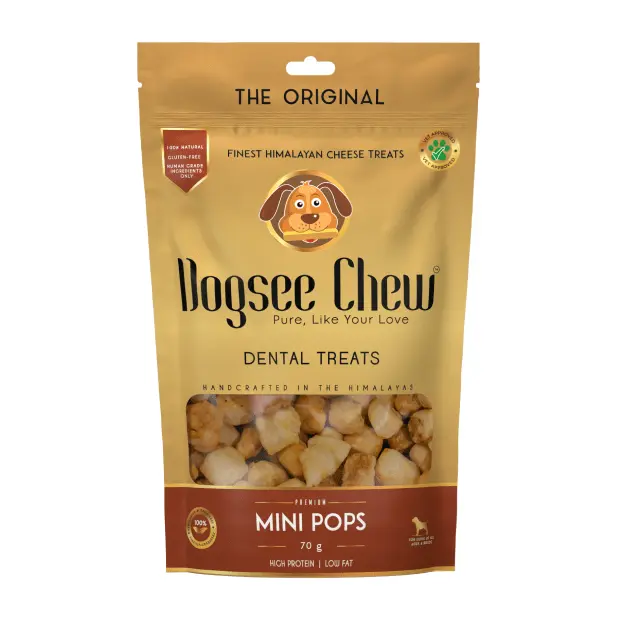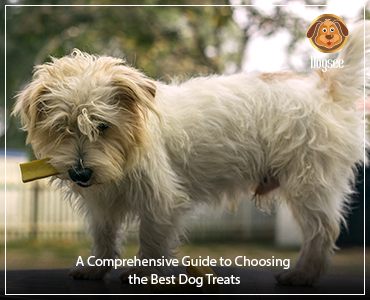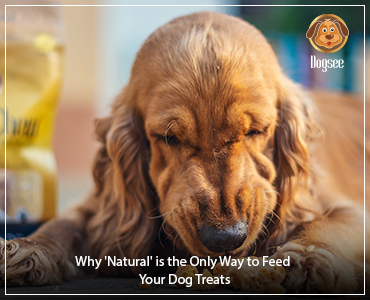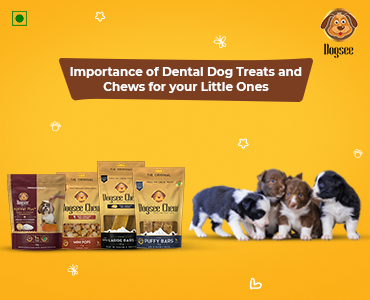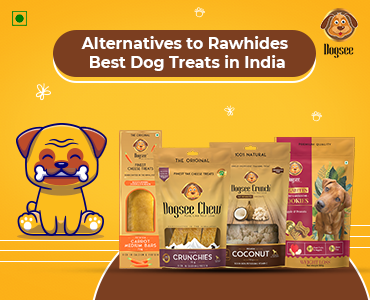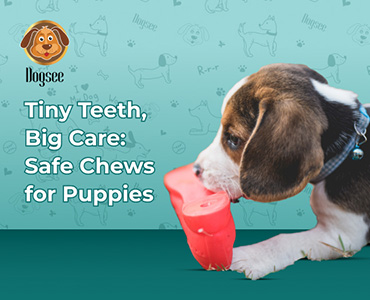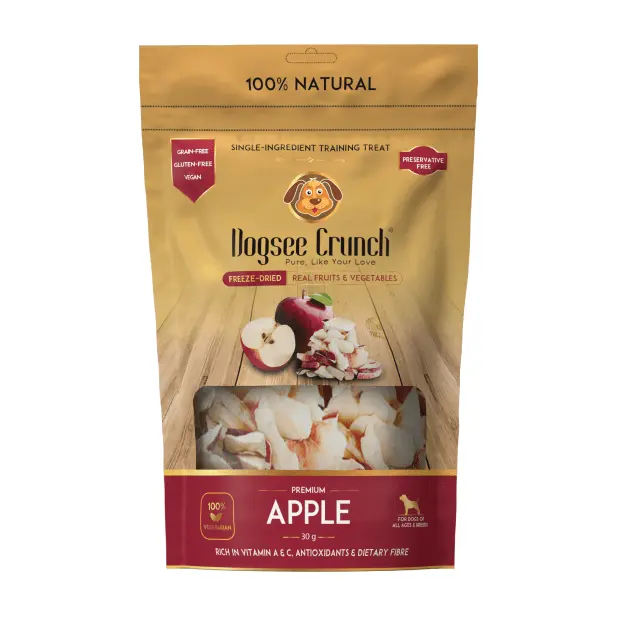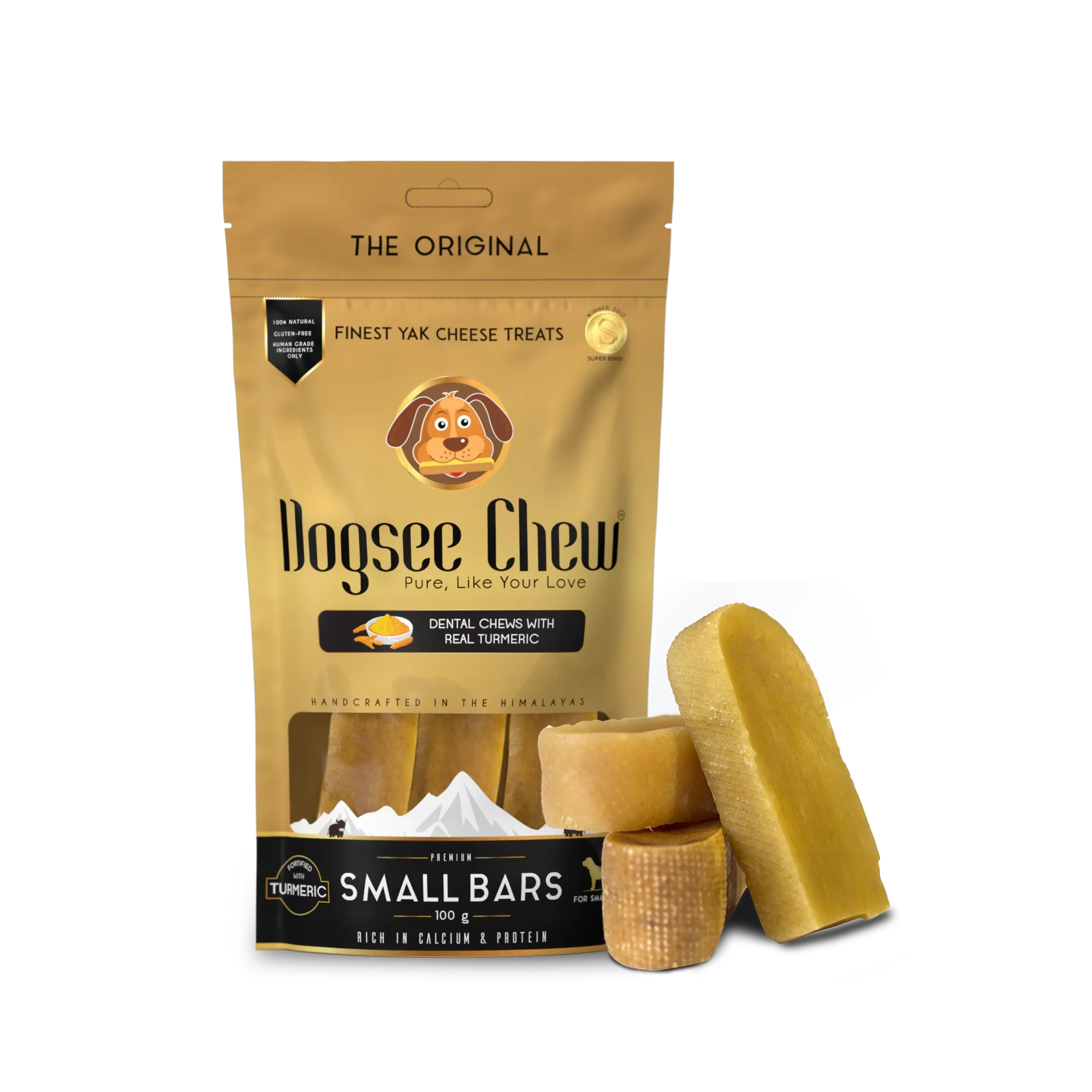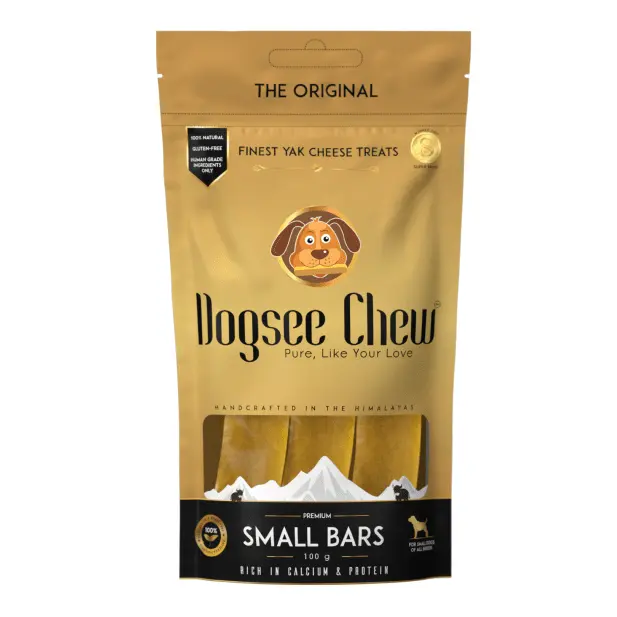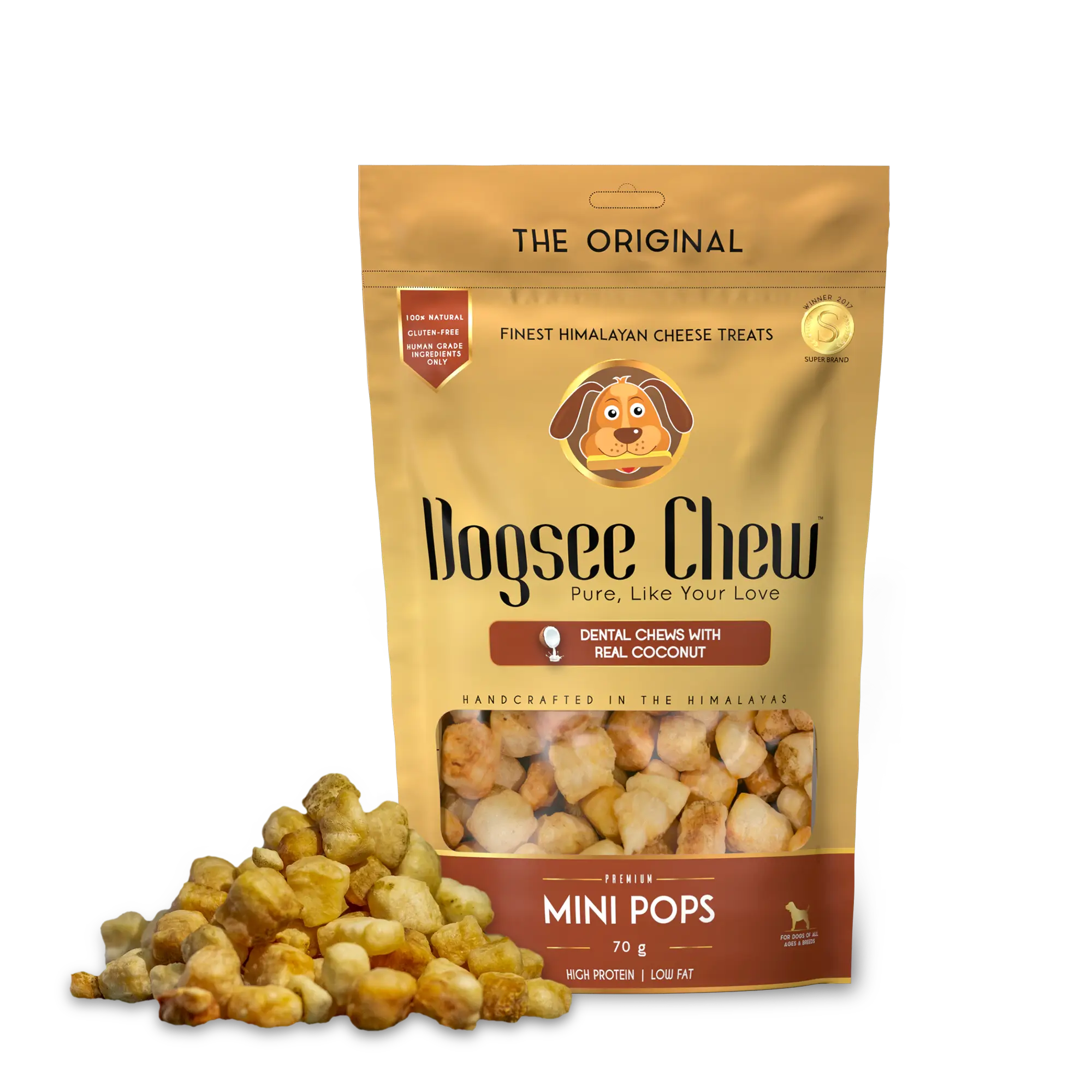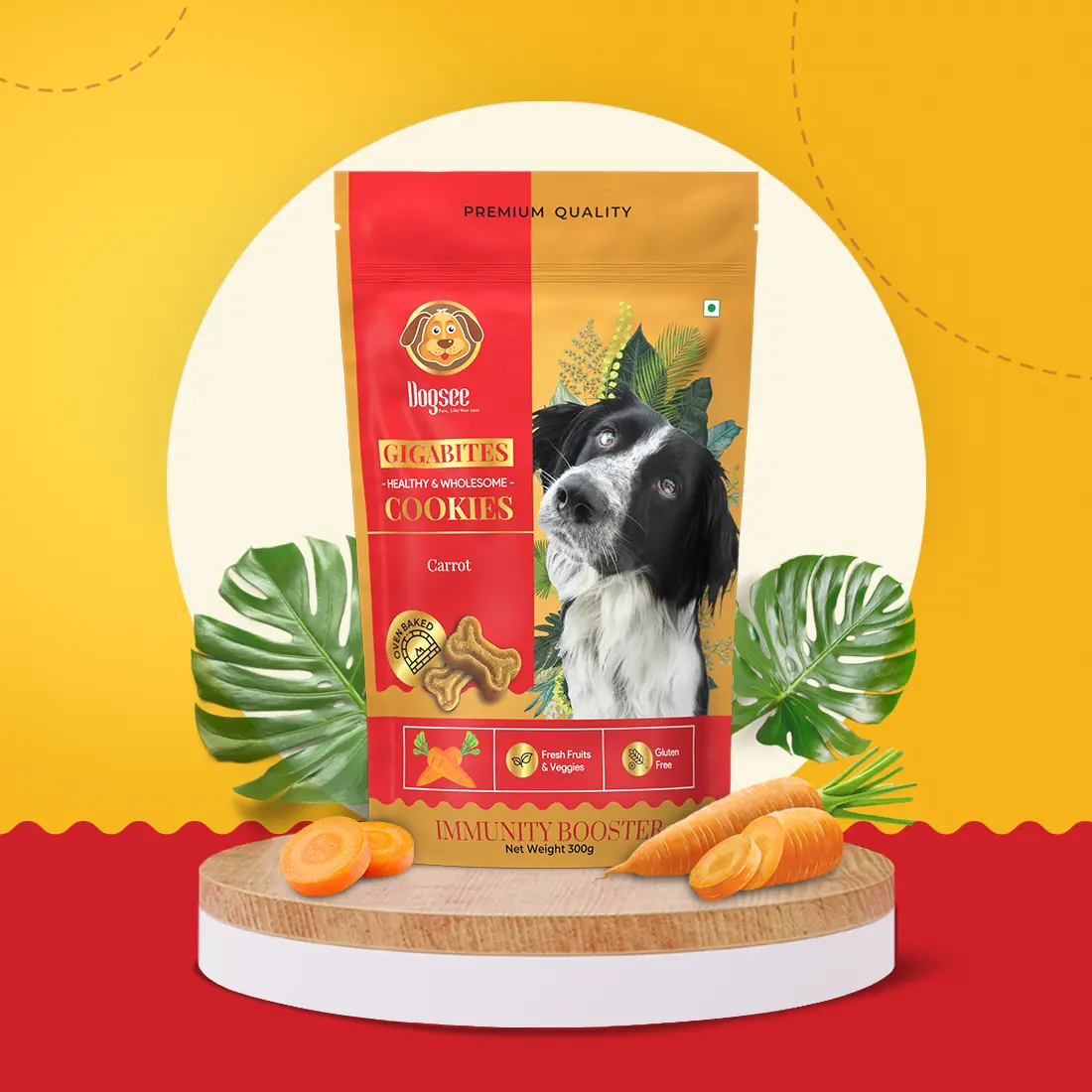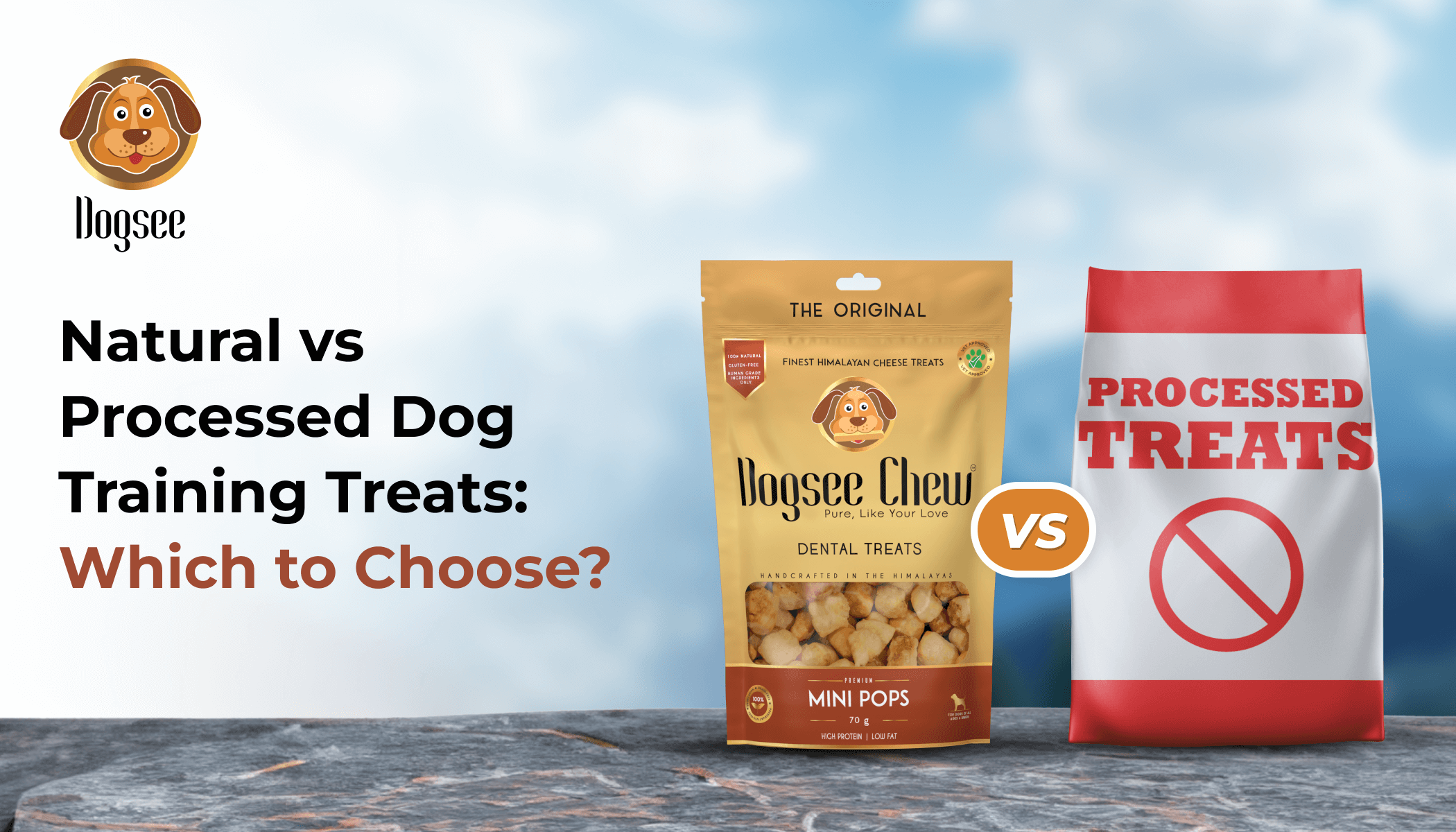
Does your doggo sometimes tune you out during training sessions?
Training our furry friends can be quite challenging, and finding the right motivation is key to helping them learn new behaviours.

While most dogs naturally want to please their pawrents, a little extra encouragement, like tasty dog training treats, can go a long way in reinforcing commands.
Training treats can be powerful tools, but not all are created equal. Some, especially those that are highly processed, might do more harm than good due to questionable ingredients and additives.
This leads to a crucial question: could your dog’s favourite treat be impacting their health?
Continue reading as we guide you through the major difference between natural and processed dog treats, tips on choosing the perfect training treats, and answers to some common FAQs on this topic.
But before we get there, let us answer this question for you right away.
Why do Dogs Crave Treats during Training?
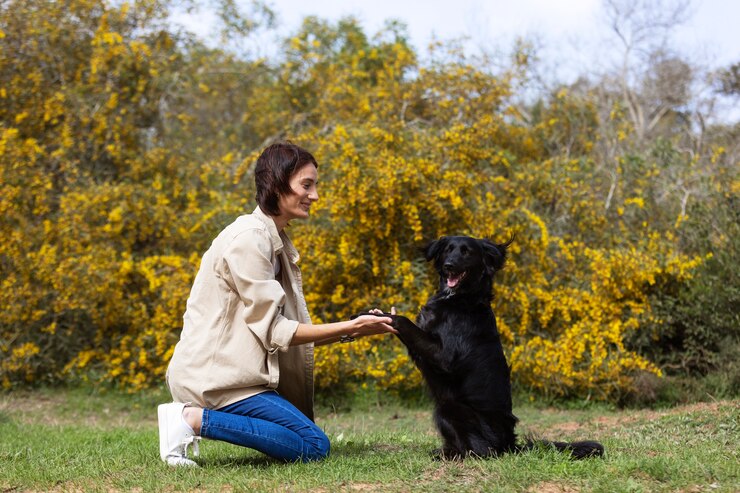
Learning new commands can be confusing and challenging for your doggo. But with a reward, training sessions can be fun.
Dogs are eager to work for rewards, so positive reinforcement can be employed both in the form of treats and by showering them with praise when they learn a particular command.
Natural and Processed Dog Treats: What’s the Difference?
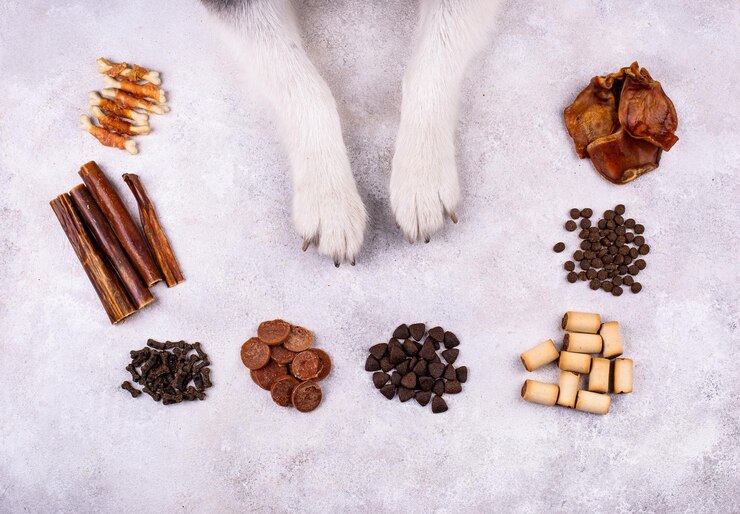
1. Ingredients
Natural treats are made from natural and whole ingredients such as meat, cheese, fruits, and vegetables, which can improve your dog’s health. They are also rich in proteins, healthy carbs, and vitamins.
Processed treats often contain ingredients like sugar, corn syrup, and preservatives like xylitol, which aren’t the safest choice for your dog.
2. Processing
Natural treats undergo minimal processing and may undergo treatments like baking, freeze-drying, and dehydration.
Processed treats undergo a higher level of processing such as adding synthetic ingredients like artificial colours and carrageenan.
3. Allergens and Digestibility
Natural treats are less likely to contain allergens due to the use of healthy and natural ingredients. They are also easier to digest and are less likely to be stored as fat.
Processed treats have a higher chance of containing ingredients that trigger allergies and sensitivities in dogs. The contents also make these treats more difficult to digest.
4. Nutritional Value
Natural treats generally retain their original nutritional value as they aren’t processed too much. They contain:
Proteins to help build and repair tissue
Vitamins like A (good for vision) and C (supports the immune system).
Healthy fats for skin and coat health
Minerals like calcium for bone health
Fibre for digestion
And so on.
Some processed treats might be enriched with vitamins, but most have minimal nutritional value due to the high degree of processing.
5. Shelf life
Natural treats generally have a shorter shelf life due to the lack of preservatives added. However, a sealed packet of our Dogsee treats has a longer shelf life of around 14 months.
Processed treats generally have a longer shelf life due to the addition of preservatives and processing.
All in all, natural training treats are generally better for your dog’s health due to the use of wholesome ingredients and the minimal processing they undergo.
On a side note, you may find this blog on Why 'Natural' is the Only Way to Feed Your Dog Treats interesting. Do check it out!
Tips to Choose Training Treats
Now that we have looked at the differences between natural and processed treats, we can explore some tips to choose treats offered by the best dog food brands out there.
Treats meant for training should fit certain criteria-
A. Consider Small and Bite-sized Treats
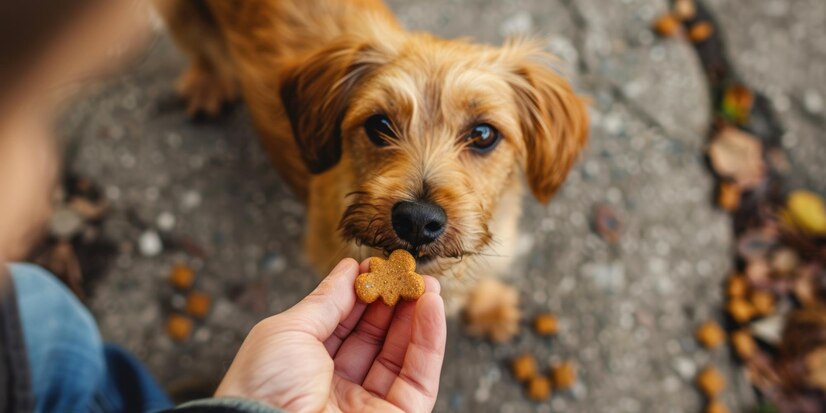
Training treats should be small and bite-sized so that your dog can eat them quickly; after performing a command and can get back to training immediately after. Larger treats take more time to consume and can distract your dog from the training session.
B. Prioritise Healthy Ingredients
Training treats should ideally contain healthy ingredients. Look for natural treats that are a good source of proteins, healthy carbs and important vitamins like A, C and E.
It is crucial to steer clear of treats that contain preservatives and harmful chemicals, such as
Xylitol: extremely toxic and can cause liver damage.
Corn syrup: has a high sugar content and can cause obesity and diabetes
Melamine: has been known to cause kidney failure.
C. Look for grain-free options
Grain-free dog treats are better as dogs can't break down starches and grains completely. This can lead to problems like bloating and gas, so grain-free treats are a better option for dogs.
D. Treats should be flavourful
Treats need to be packed with flavour to pique your dog’s interest. Treats with cheese, for example, are a favourite among dogs.
E. Consider portion size
Portion sizes are also very important when giving your dogs training treats. Make sure that these treats fit into your dog's daily calorie requirements and don’t exceed them.
Different dogs have different nutritional requirements based on their breed and size. It’s important to check the portion sizes before feeding your dog. Ideally, treats should not take up more than 10% of your dog’s calorie requirement.
F. Look for low-fat treats
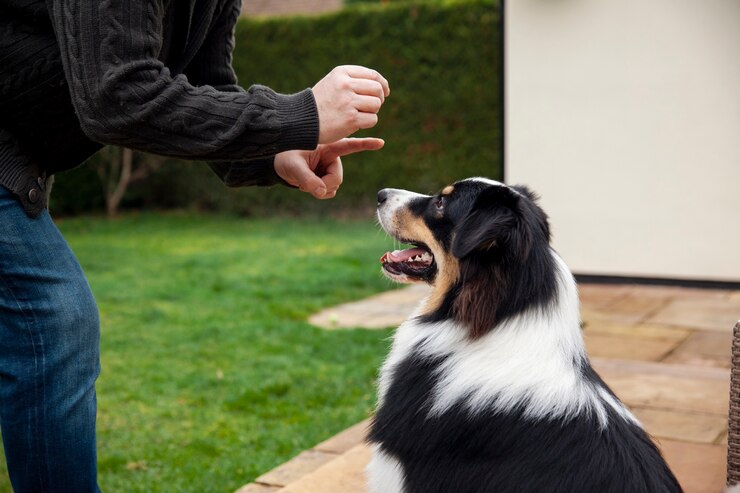
Small and bite-sized are better for dogs, as they can be consumed quickly and your dog can focus on training. Low-fat treats are also better since multiple treats can be given to dogs during training while still meeting nutrition requirements.
G. Take consistency and texture into consideration
Dogs may have different preferences regarding the texture of their treats. Older dogs might prefer softer treats as they are easy to chew, whereas other dogs might like a crunchy consistency better.
The treat's texture can also affect how long it takes your dog to finish it. To keep them enjoying for longer, opt for something chewier if you're looking for something slightly more time-consuming.
Check Out Our Range of Natural Training Treats
At Dogsee, we offer many nutritious treat options that you can use to reward your dog during training sessions.
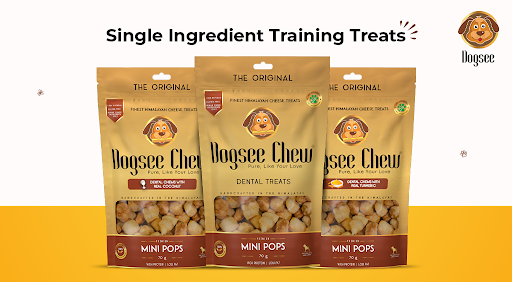
Like the other Dogsee treats, the Mini Pops are made from the highest quality ingredients.
Made with Himalayan Yak cheese, the Mini Pops are bite-sized and perfect for training. They are smoked and sun-dried for over a month, making the flavour and texture enjoyable for dogs.
Available in turmeric and coconut flavours as well, these treats are also low in fat and help combat bad breath and other dental issues your dog might face.
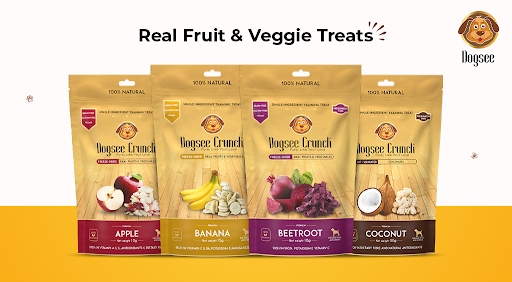
These are single-ingredient treats made from fruit and vegetables and are great for your dog’s overall health, especially skin and coat.
They are available in three different flavours for your furbaby to enjoy—apple, banana, and beetroot—and are perfect for training due to their nutritional benefits and size.
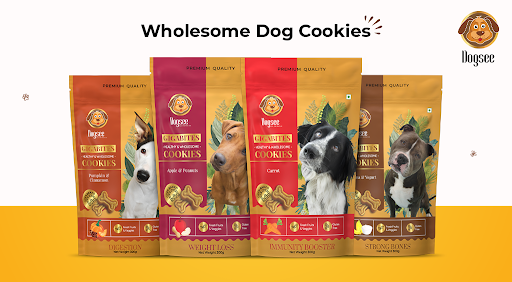
Available in four different flavours (carrot, apple & peanut, banana & yoghurt, pumpkin & cinnamon), the Dogsee Gigabites are cookies made from the finest quality fruits and vegetables.
Rich in various vitamins and nutrients, these cookies are not only great for training but also help enhance their overall immunity.
If you are looking at natural and healthy alternatives, our treats are a great choice for sure.
FAQs about Dog Treats for Training:
1. Are grain-free treats better?
Answer: As discussed earlier, grain-free treats are best as they are easier to digest and are better for weight management.
2. How do I avoid overfeeding my dog with treats during training sessions?
Answer: You can avoid overfeeding by breaking treats into smaller pieces or by using smaller, bite-sized treats. As your dog learns commands, you can reduce dependency on treats and use praise and toys as rewards as well.
3. What are a few ingredients to avoid in dog treats?
Answer: A few ingredients to avoid are:
Artificial preservatives (e.g., BHA, BHT)
Food colouring
Fillers (e.g., corn, soy)
Xylitol
4. Is there a difference between training treats and regular treats?
Answer: Yes! Training treats tend to be smaller than regular treats; they are bite-sized and are lower in fat so they can be given frequently during training sessions so that your dog doesn’t gain weight.
Natural vs Processed Dog Training Treats: The Final Verdict?
While the choice ultimately depends on your dog’s specific needs and your priorities as a pawrent, natural treats undoubtedly have the upper hand when it comes to safeguarding your dog’s well-being and providing superior nutritional value.
On the other hand, processed treats may offer better flavour and variety, but they come with potential risks, especially if consumed in excess or if they contain harmful additives
Before making a decision, always consult with your vet. They can recommend the best treats for your dog based on their health conditions, breed, size, and age.
We hope you found this blog insightful! Stay connected with us on our socials for more such interesting content.
Instagram - https://www.instagram.com/dogseechew/
Facebook - https://www.facebook.com/dogseechew/
Thank you for reading! Happy training!
 HELPFUL0 people found it helpful
HELPFUL0 people found it helpful
Related Blogs
Subscribe to Our Blogs
and never miss on the latest update!








